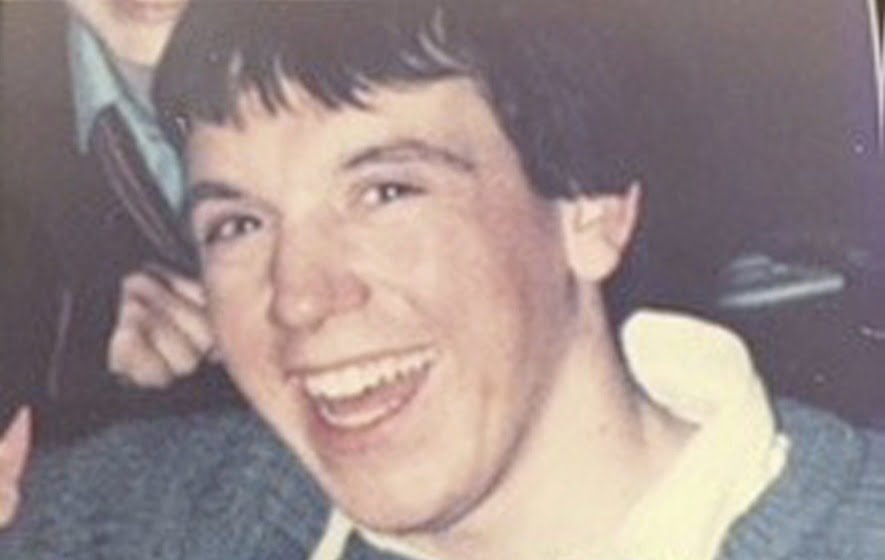
Francis Bradley (20) was shot dead at a farm on the Hillhead Road near Toome in 1986
A former British soldier has been accused of ‘executing’ a Co Derry man as he lay helpless on the ground during a suspected SAS shoot-to-kill operation.
The suggestion that the ex-British soldier ‘finished off’ Francis Bradley (20) in February 1986 was made during an inquest on Wednesday.
The former squaddie, known as Soldier C, repeatedly failed to answer questions about his role claiming “privilege against self-incrimination” during the hearing in Coleraine.
Mr Bradley, whose name was later added to the IRA’s roll of honour, was shot dead close to a weapons dump during a British army ambush near Toome.
An inquest previously heard he had told of being threatened by police before he was killed.
During the ambush that claimed Mr Bradley’s life Soldier C fired 20 shots – all but one of the total rounds discharged.
The ex-soldier was also involved in other controversial killings during the Troubles, including the SAS double killing of IRA members Martin McCaughey and Dessie Grew in October 1990, near Loughgall in Co Armagh.
During an inquest into their deaths Soldier C was referred to by the Cipher Soldier A and was responsible for firing 20 shots on that occasion also.
The former soldier, who has been granted anonymity and was screened from public view during Wednesday’s hearing, has refused to adopt a statement he made in 1986, which gives an account of the incident, including how he fired several bursts of gunfire as he moved towards Mr Bradley.
Instead, coroner Peter Irvine, has been provided with a fresh statement signed by Soldier C last month, which provides none of that detail.
Soldier C claims he was involved in six tours of the north with a “Special Military Unit” – a description used by the Ministry of Defence but generally understood to include the SAS.
Karen Quinlivan KC, who acts for the Bradley family, suggested during the hearing that when an initial shot, fired by a different officer, was discharged Mr Bradley was either facing away from soldiers or kneeling, adding “he posed no threat”.
In response Soldier C insisted Mr Bradley was facing troops.
Ms Quinlivan also referred to the British army’s ‘Yellow Card’, which sets out rules for opening fire, suggesting they had been breached from the outset, which was rejected by Soldier C.
She went on to compare Soldier C’s 1986 statement with a letter recently sent by his solicitors, according to them acting on his instructions, pointing out differences in the accounts of what happened.
Based on the contents of the letter Ms Quinlivan suggested Mr Bradley was on his back and unarmed when he was shot by Soldier C.
In response Soldier C claimed “privilege against self-incrimination”.
Addressing Soldier C, Ms Quinlivan put it to him that he was the person “who fired the fatal shots” and sought to clarify that he was “not willing to give an account” of the shooting to members of the Bradley family, and others, who were in court.
In response Soldier C claimed “privilege against self-incrimination”.
Ms Quinlivan went on: “I am going to suggest to you that when you fired at Mr Bradley you were never firing at a person who was posing a threat, which is what is required by the Yellow Card.”
Soldier C again responded by claiming “privilege against self-incrimination”.
The lawyer suggested to Soldier C that he was “not firing aimed shots” and put it to him that he “breached the yellow card when you fired those rounds”.
Soldier C responded by claiming “privilege against self-incrimination”.
The lawyer also put it to the former soldier that he “fired more rounds that on any analysis would be regarded as necessary” suggesting it appeared he fired all his rounds on automatic.
Soldier C once again claimed “privilege against self-incrimination”.
Ms Quinlivan also highlighted that Soldier C’s role stood in “stark contrast” to his colleagues saying that the 20 shots he fired was “evidence of excessive force” on his part.
Soldier C claimed “privilege against self-incrimination” in response.
Ms Quinlivan then suggested Mr Bradley had been ‘finished off’.
“But the aspect of this Soldier C, is that the evidence clearly suggests that when he sustained fatal wounds Francis Bradley was lying on his back on the ground and that you fired three shots on automatic into his abdomen area causing death,” she said.
“I am going to suggest to you Soldier C that you executed Francis Bradley, deliberately, knowing that he was wounded, seriously wounded, knowing that he posed no threat but nonetheless you decided to finish him off.”
In response Soldier C claimed “privilege against self-incrimination”.
You must be logged in to post a comment.